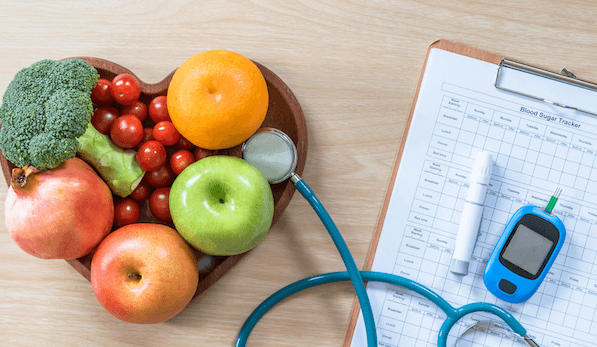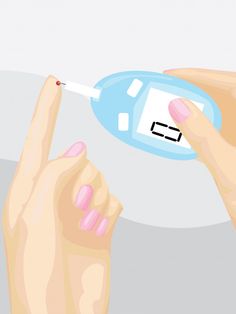Insulin Resistance
Author: Recyll Oraiz
Recyll Oraiz
Category: Health
What exactly is insulin?
Insulin is a hormone that is produced by the pancreas. It enables glucose in your blood to enter cells in your muscle, fat, and liver so that it can be utilized for energy. These cells are located in the areas of your body that require glucose the most. The glucose in your bloodstream comes from the food you consume. In times of need, such as when you are fasting, the liver is also responsible for producing glucose. After you eat, your pancreas will secrete insulin into your bloodstream. In response to an increase in blood glucose levels, often known as blood sugar. After that, insulin brings down the glucose levels in the blood to keep them within the usual range.
Symptoms
It is essential to collaborate with your medical provider if you have prediabetes. They will check your blood sugar levels as well as your hemoglobin A1C (HbA1c) on a regular basis in order to determine whether or not you have developed diabetes.
The following are some of the classic diabetic symptoms:
an overwhelming need for water or food
a sensation of hunger even after a meal
increased or frequent urination
tingling in the hands and feet
f eeling more tired than usual
F requent infections are all symptoms of diabetes.
Blood tests indicating dangerously high levels of glucose in the blood
Acanthosis nigricans is a skin disorder that can sometimes manifest in individuals who simultaneously have insulin resistance. Also, it manifests itself as dark spots with a velvety texture. Most frequently on the back of the neck, the groin, and the armpits.
Even if you don’t have any evident symptoms, your doctor can typically discover prediabetes or diabetes using lab tests.
Indicators of Potential Harm
The following are factors that increase one’s likelihood of developing insulin resistance, prediabetes, or diabetes:
being overweight or obese, particularly when the excess body weight is located around the midsection leading a sedentary lifestyle or one that is poor in exercise smoking eating high amounts of alcohol, which can have an effect on the liver having trouble sleeping
having high amounts of cholesterol in one’s blood
having high blood pressure, which a study from 2018 ties to an elevated risk of insulin resistance
Prediabetes and diabetes share some risk factors in common with heart disease and other cardiovascular and cerebrovascular health concerns, such as stroke.
Because of this, medical professionals strongly encourage patients to make changes in their lifestyles that may assist in lowering the likelihood of developing the disorder.
carries a high body mass index (weight) or is obese and has elevated cholesterol levels
has a history of diabetes in their family is of African American, Asian American, Latino or Hispanic American, Native American, or Pacific Islander descent has had gestational diabetes or delivered a baby weighing more than 9 pounds has a history of gestational diabetes or delivering a baby who weighed more than 9 pounds.

Problems Associated with Insulin Resistance
Prediabetes affects an estimated 87 million persons in the United States; of those, 30-50% will go on to acquire full-blown type 2 diabetes.
Additionally, up to eighty percent of those who have type 2 diabetes also have NAFLD.
People who have insulin resistance, prediabetes, or type 2 diabetes are at an increased risk for cardiovascular disease.
According to the International Diabetes Federation, insulin resistance not only increases the likelihood of having a heart attack or stroke, but it also increases the likelihood that such an incident will be fatal.
Researchers at Brigham and Women’s Hospital conducted a study that included more than 28,000 female participants and discovered that insulin resistance was a significant predictor of cardiovascular disease.
This is the connection
The presence of high insulin levels in the early stages of insulin resistance appears to promote the formation of tumors and inhibit the ability of the body to defend itself by eliminating cancerous cells.
In addition, research has identified a clear connection between insulin resistance and a deterioration in memory function, which raises the risk for Alzheimer’s disease.
The illness becomes significantly more difficult to manage as insulin resistance levels rise. It is possible that increasing the amount of diabetes medicine you take will be necessary for you to attain the levels of blood sugar you have set as a goal.
Procedures for the testing and diagnosis of insulin resistance
A1C test
An A1C test is one approach to determine prediabetes or diabetes in a patient.
This test will determine your average blood sugar levels throughout the most
recent two to three months.
Your physician might want to double-check the results of the test at a later
time. However, these percentages could change by 0.1 to 0.2 percent depending
on the laboratory where you have your blood collected.
glucose monitoring during overnight fasting
When you go in for this test, you should not have eaten or drunk anything for at least 8 hours beforehand.
If the level is high, a second test could be necessary a few days later to
confirm the findings. If both of these tests indicate that you have excessive
amounts of glucose in your blood, your doctor may diagnose you with
prediabetes or diabetes.
When glucose levels are between 100 and 125 mg/dL, prediabetes is present.
There may be a difference of up to three mg/dL points in the cutoff figures
from one laboratory to the next.
Glucose tolerance testing
One more technique to identify diabetes or pre-diabetes is using a glucose tolerance test that lasts for two hours.
After two hours, a typical level of blood sugar is below 140 mg/dL.
Random blood draws
If you are suffering major diabetes symptoms, it is helpful to test your blood
sugar on a random basis. The American Diabetes Association (ADA), on the other
hand, does not advocate random blood glucose tests for the routine screening
of diabetes or for the identification of prediabetes.














